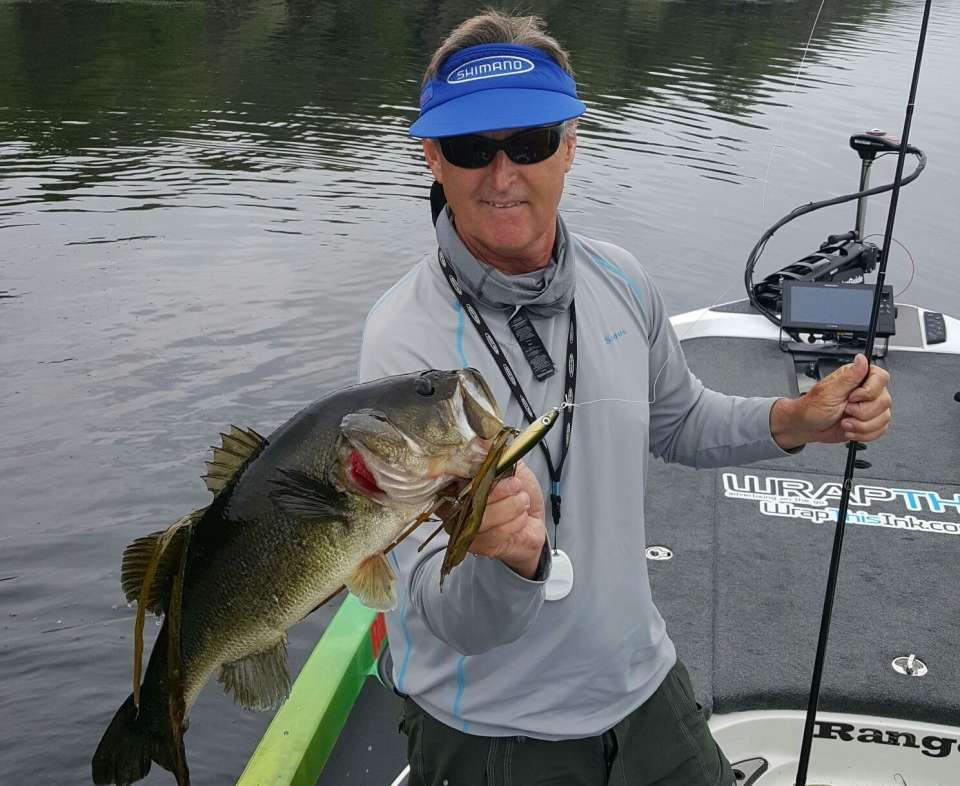
I’m often asked how I choose the right topwater lure for a given situation, and that’s a tough question. There are so many variables to consider – the weather, water color, type of cover. The list is long.
But it doesn’t mean we can’t narrow the possibilities a bit.
Here are a few guidelines that have worked for me over the years, and hopefully they’ll help simplify things for you next time you’re out on the water.
To start, it’s important to break down the various types of topwater lures. Among them are poppers, walking baits, prop baits and buzzbaits. And while each of these are designed to draw fish to the surface, the way they achieve that is quite different. Here’s why.
Learning to walk
Let’s take walking baits, for instance. Unless you’re throwing a really large profile model, or one with a loud internal noise maker, the actions for walking baits are fairly subtle. They simply move from side to side in a smooth, gliding motion.
Of course, that’s not always the case. They can also be worked aggressively to create more commotion. But for the most part, walking baits are the stealthier members of the topwater family.
They are excellent in deep, clear reservoirs and on natural lakes … especially those with grass, docks or flooded cypress trees. They have the ability to catch larger than average fish. That goes for largemouth, spots and smallmouth. They also have the ability to raise suspended fish. So, for those reasons, I try them whenever conditions seem right.
When I feel a walking bait might work, I’ll start with a steady, medium-speed retrieve – sashaying the lure next to or over various visual targets, like stumps, holes in the grass, etc. If I don’t see a fairly quick response from the fish, I’ll slow the retrieve and shorten the distance of each pull. When the lure reaches the target, I’ll either make contact, pause it or both. If that fails, then I’m probably switching to another lure.
Popping fresh
Because the profile of a walking bait may be too large for certain situations, I’ll sometimes drop down to a standard-sized popper. And depending on the mood of the fish, I’ll work the popper accordingly.

For instance, when bass are chasing shad or some other type of forage fish on the surface, I’ll usually start with a brisk retrieve – sliding and popping the lure steadily through what I believe are the highest percentage areas. This presentation works extremely well when bass are on the feed, but it can also provoke fish that aren’t in the mood.
On other occasions, I may work a popper more slowly … much like a walking bait. In fact, by tying a loop knot, you can get some poppers to also walk from side to side. Their gait is obviously less, but they can still sashay enough to make fish mad, and that can generate strikes.
When less action is best, I’ll pause a popper next to the target and let it bob. You’d be surprised how many strikes this can produce.
Poppers are good around grass, wood and rock, especially under calm, overcast conditions.
A Preference for Props
My favorite topwater lure type is the prop bait. Maybe it’s because I’m from the South, but I have a tremendous amount of confidence in them.
Of all the topwaters, I feel the prop bait requires the most patience. Too often, the tendency is to overwork the lure – continually pulling it so the props are sputtering and chirping, making excessive commotion.

The truth is most of the strikes I get on prop baits come as the lure is sitting still, or just as it begins to move after a lengthy pause.
Sure, there are times when bass will connect on a quicker cadence, but not usually. That’s why I use the propellers to get the fish’s attention, and then let the lure’s profile do the rest. This slow, almost glacial-speed retrieve works particularly well when there’s a slight ripple on the surface. At that point, the lure takes on its own action.
I like prop baits anytime there is grass, either emergent or submerged. They also work well around flooded brush, cypress and laydowns. The trick is getting the lure tight to the cover without fouling, then working it with patience.
It’s important to carry both single and tandem-prop models. Sometimes one will outperform the other. And if you’re throwing a tandem, I highly recommend those with counter-rotating props. To me, they are by far the best producers.
Lastly, be sure the hardware is loose so that the props can turn freely to create a subtle chattering sound. That drives bass crazy.
Surface Lure Summary
Although I’ve tried to provide some separation from one group to the next, the truth is, these various types of topwaters can and will overlap each other. When a walking bait might work, so could a popper, and so on. So keep an open mind and let the situation and the fish help you make the best choice.
Next time we’ll discuss the differences and advantages of topwaters that require steady movement to remain on the surface. Stay tuned!

